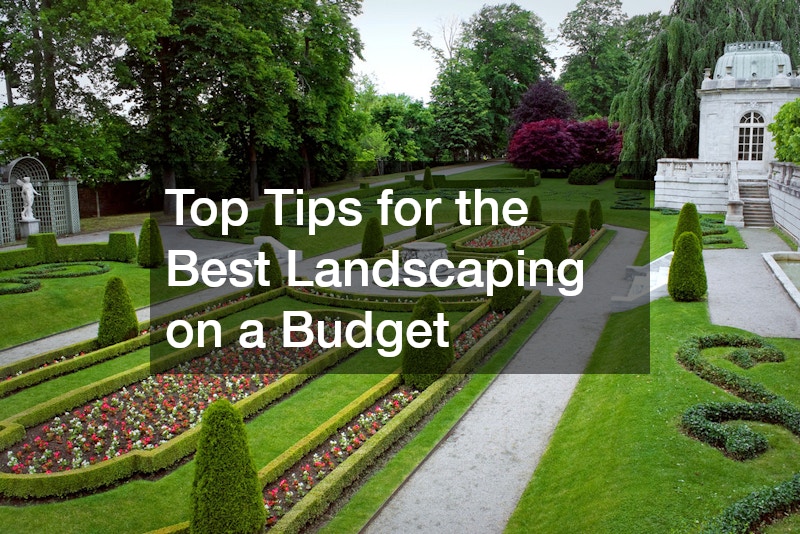Top Tips for the Best Landscaping on a Budget Creating a beautiful outdoor space doesn’t have to break the bank. With a bit of creativity and strategic planning, you can achieve a stunning landscape that enhances your home’s curb appeal and provides a relaxing environment for you and your family. Whether you are taking on a DIY project or enlisting the help of the best landscaping company, these tips will help you make the most of your budget.
1. Plan Before You Plant The first step to cost-effective landscaping is thorough planning.
Before buying plants, materials, or hiring services, take the time to design your space. Consider factors like the layout, sun exposure, and how you intend to use the space. A well-thought-out plan will help you avoid costly mistakes and ensure that every dollar spent contributes to your vision.
2. Opt for Perennials Perennials are plants that return year after year, making them a smart investment for budget-conscious landscapers. Unlike annuals that need to be replaced each season, perennials provide lasting beauty without recurring costs. Choose a variety of perennials that bloom at different times of the year to ensure your garden remains colorful throughout the seasons.
3. Use Native Plants Native plants are adapted to the local climate and soil conditions, meaning they require less water, fertilizer, and maintenance. This not only saves you money on upkeep but also supports local wildlife and reduces your garden’s environmental impact. A reputable source like the best landscaping company can recommend native species that thrive in your area.
4. Incorporate Hardscaping Hardscaping elements such as pathways, patios, and retaining walls can add structure and functionality to your garden. While the initial cost may be higher than planting, hardscaping is a long-term investment that requires minimal maintenance. To stay within budget, consider using affordable materials like gravel, reclaimed wood, or recycled pavers.
5. Group Plants by Water Needs To conserve water and reduce your irrigation costs, group plants with similar water requirements together. This technique, known as hydrozoning, ensures that each area of your garden gets the appropriate amount of water without waste. Efficient irrigation systems, such as drip lines or soaker hoses, can further enhance water conservation.
6. DIY Where Possible While hiring professionals can yield stunning results, you can handle many landscaping tasks on your own. Simple projects like planting flowers, spreading mulch, or building a small garden bed can be done with minimal tools and experience. However, for more complex tasks like tree removal or major hardscaping, consulting with the best landscaping company may be wise to ensure safety and quality.
7. Buy in Bulk For materials like mulch, gravel, or soil, buying in bulk can significantly reduce costs. Many suppliers offer discounts for large orders, and you can store any leftover materials for future use. If you have a small garden, consider teaming up with neighbors to share the cost of bulk purchases.
8. Repurpose and Reuse: Get creative with materials you already have. Old bricks, stones, or wood can be repurposed into garden borders, pathways, or raised beds. Repurposing not only saves money but also adds a unique, personal touch to your landscape.
9. Consult with Experts Even if you are working on a tight budget, it’s worth consulting with a landscaping expert. The best landscaping company can offer valuable advice, help you avoid common pitfalls, and even suggest cost-saving alternatives you might not have considered.
By following these tips, you can achieve a beautiful, functional landscape without overspending. Whether doing it yourself or working with the best landscaping company, the key is planning carefully, prioritizing your needs, and being resourceful. With effort and creativity, your dream garden is within reach.
.




